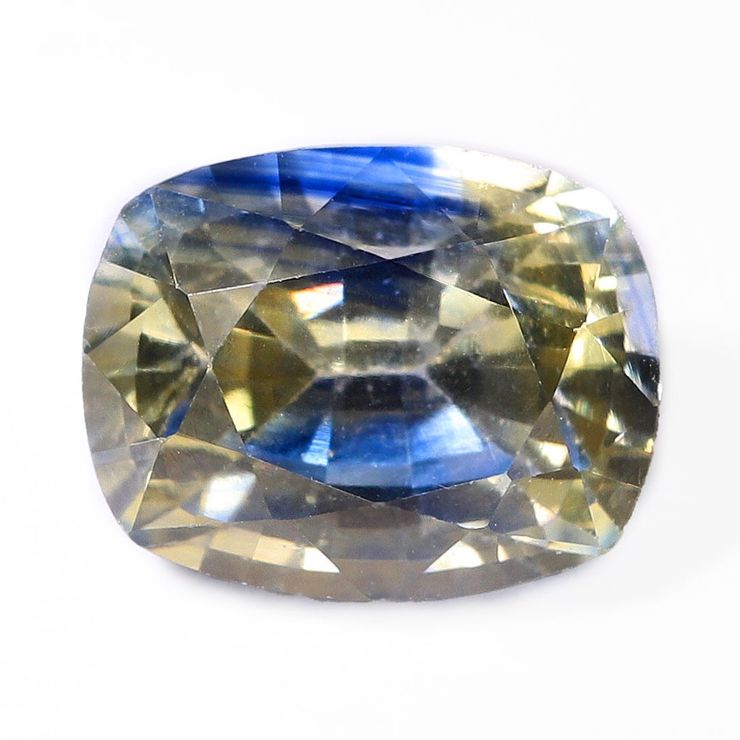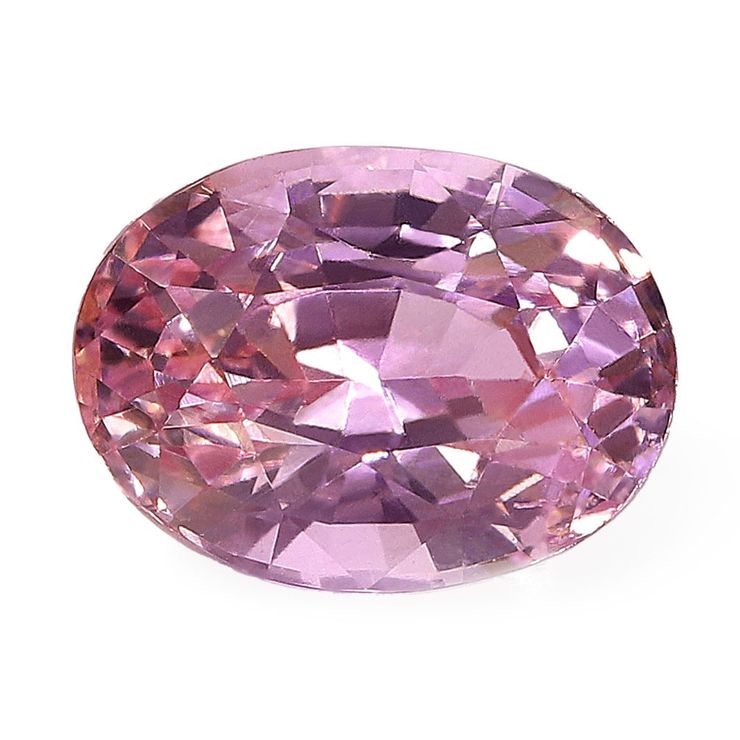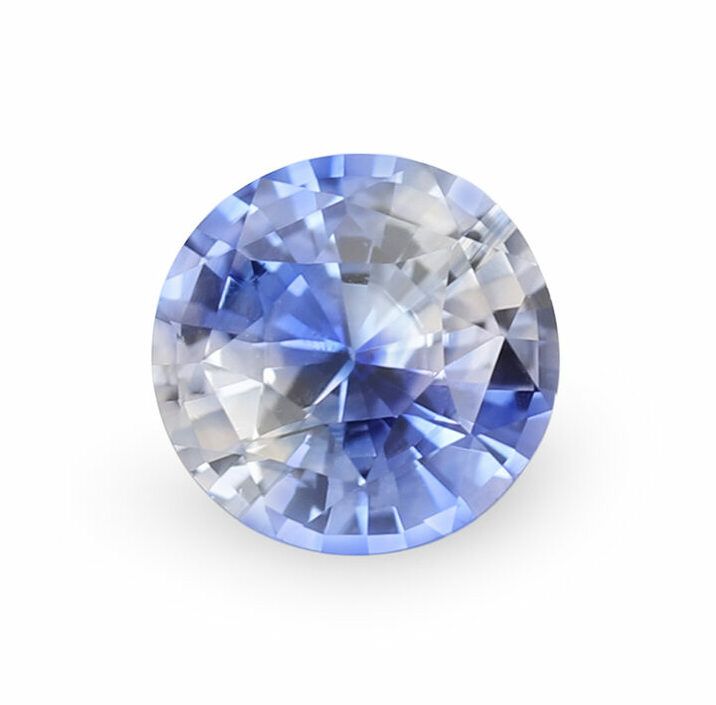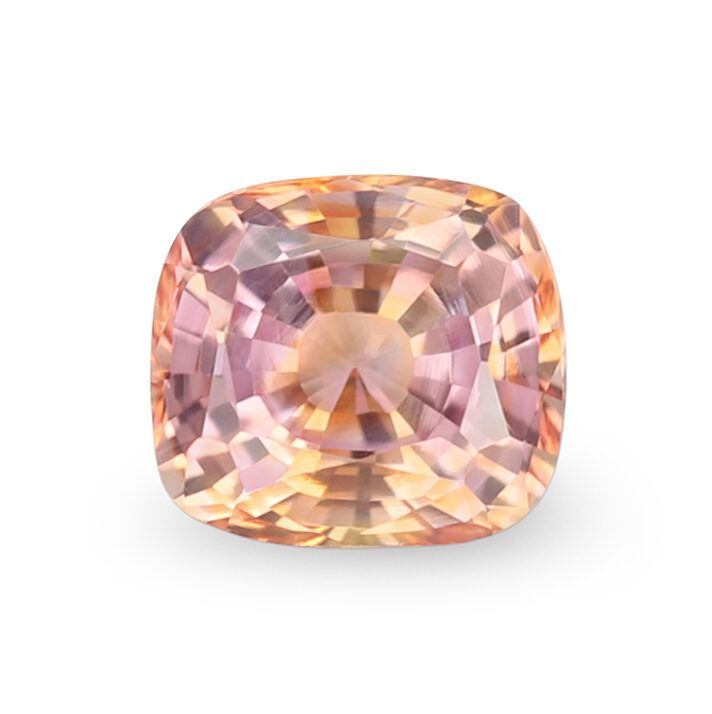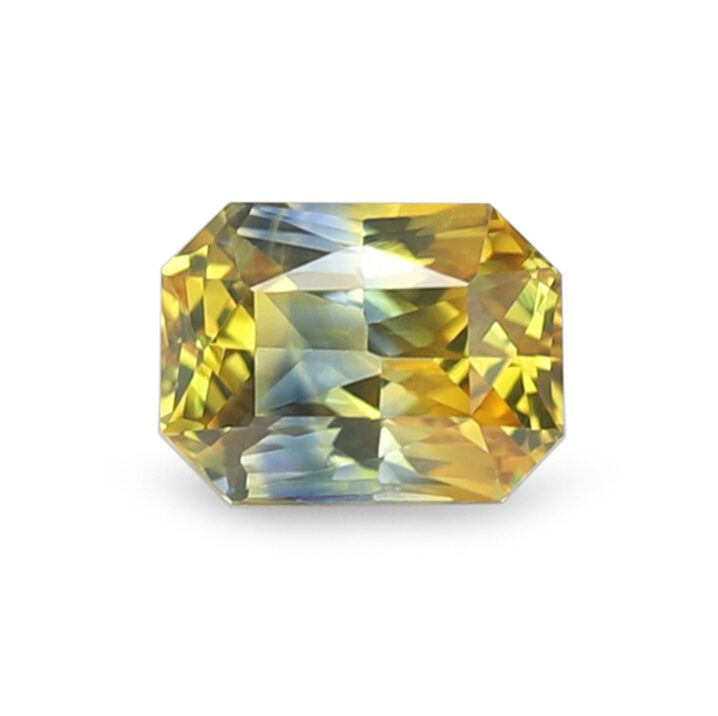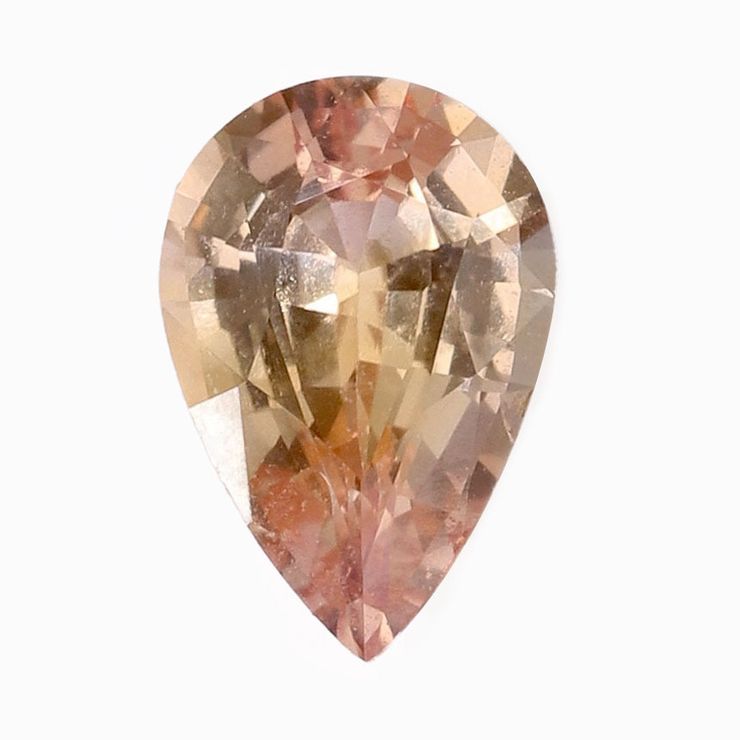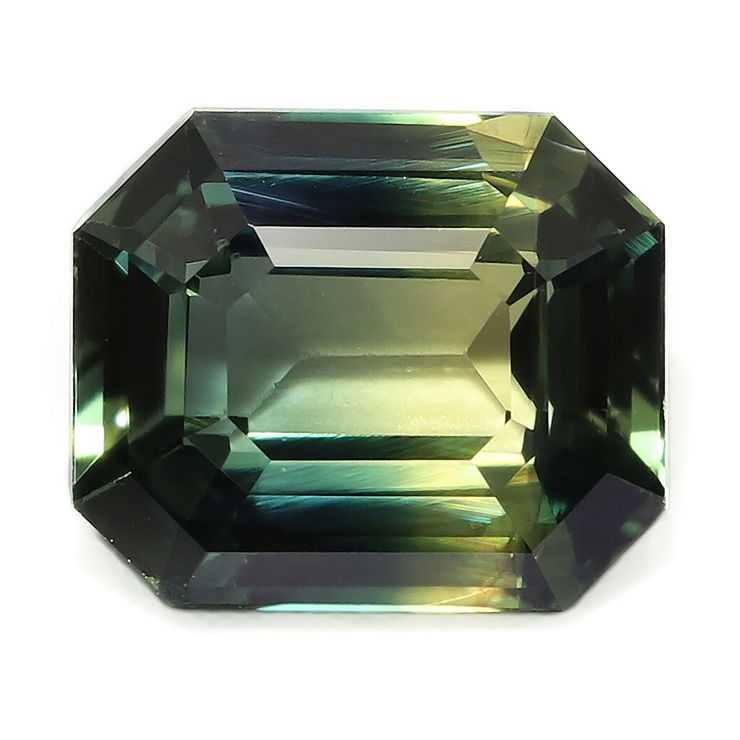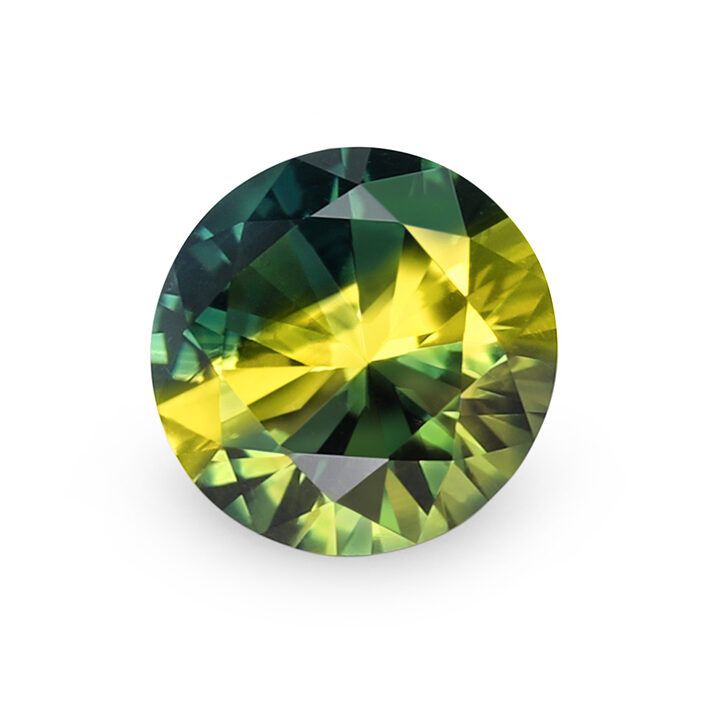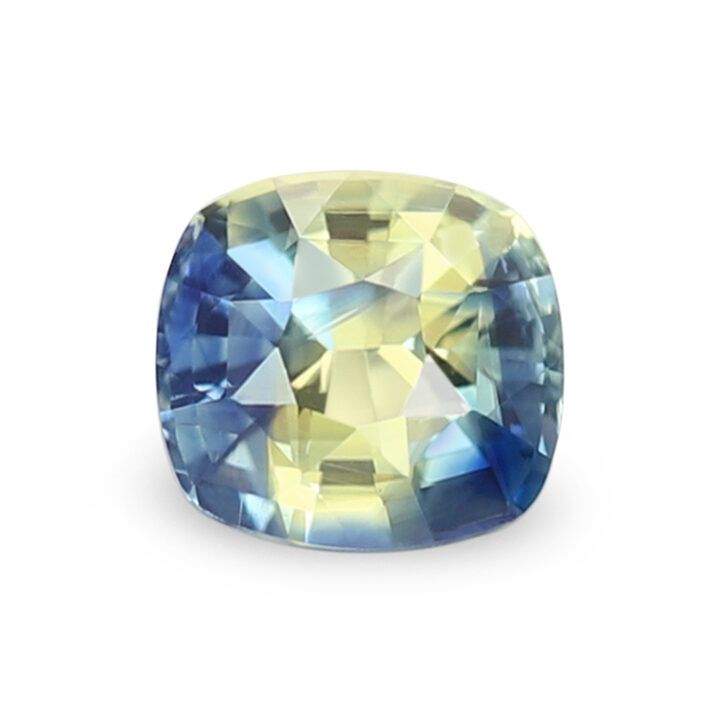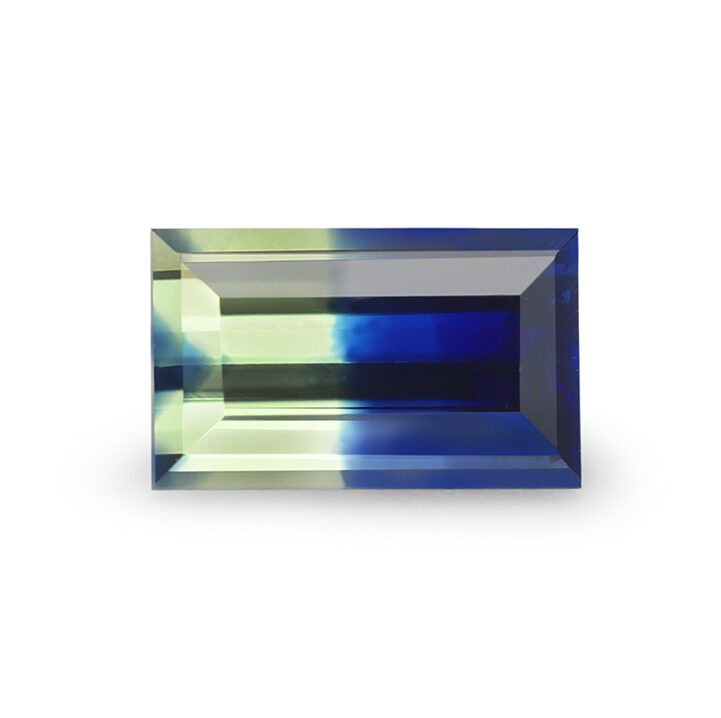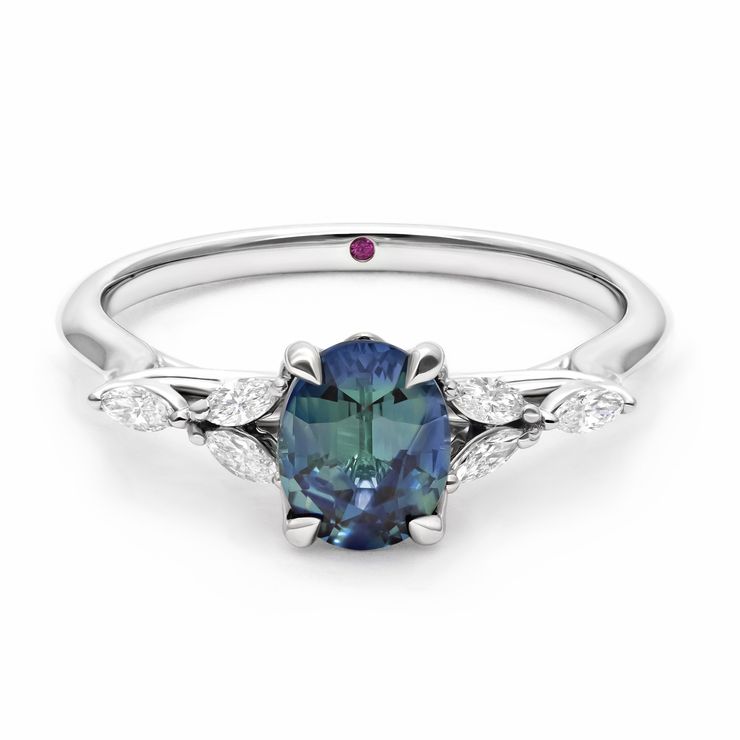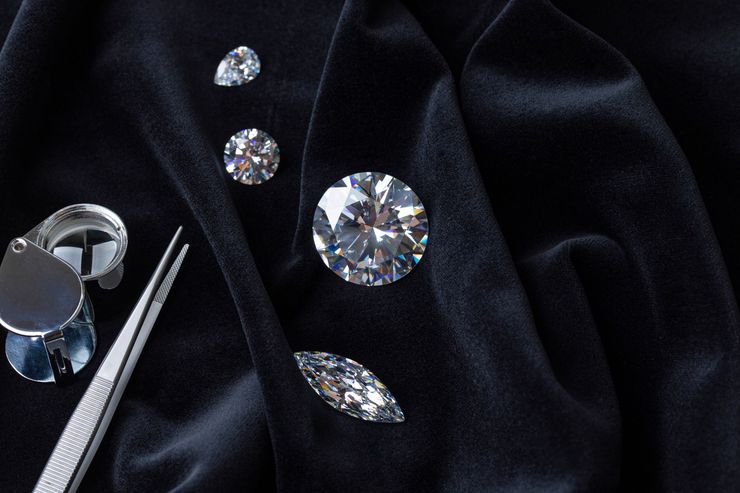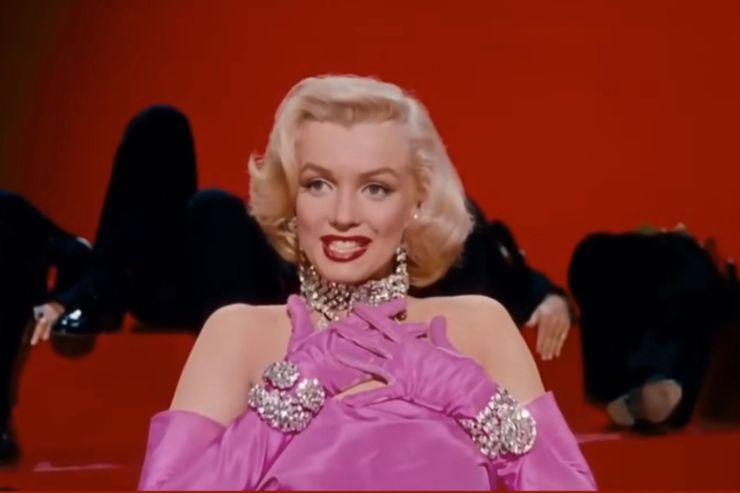The short answer: absolutely.
But despite their dreamy, one-of-a-kind appearance, bi-colour sapphires remain relatively unknown, thus, quite uncommon. However, the popularity of coloured gemstones has been on the rise, making them one of the top engagement ring trends of 2020. Could this golden age of colourful wedding jewellery finally allow bi-colour sapphires to take centre stage?
Sapphires are an incredibly durable gemstone, making them ideal for everyday wear. In fact, sapphires score a 9 on the Mohs mineral hardness scale (a measure of the resistance of materials against scratches of harder materials), meaning they’re second only to diamonds in terms of durability. You can be confident that your parti sapphire engagement ring will last a lifetime.
When choosing a bi-colour sapphire it’s best to work with a gemstone expert or jewellery designer in order to find a stone with the most suitable cut for your design, along with the best colour pattern. Another interesting thing about bi-colour sapphires is that they’re commonly cut in artistic and creative shapes—more so than their single tone counterparts. This is because a cutter will study a rough bi-colour sapphire’s colour pattern and cut the stone to best feature the colours rather than retaining the most carat weight.


